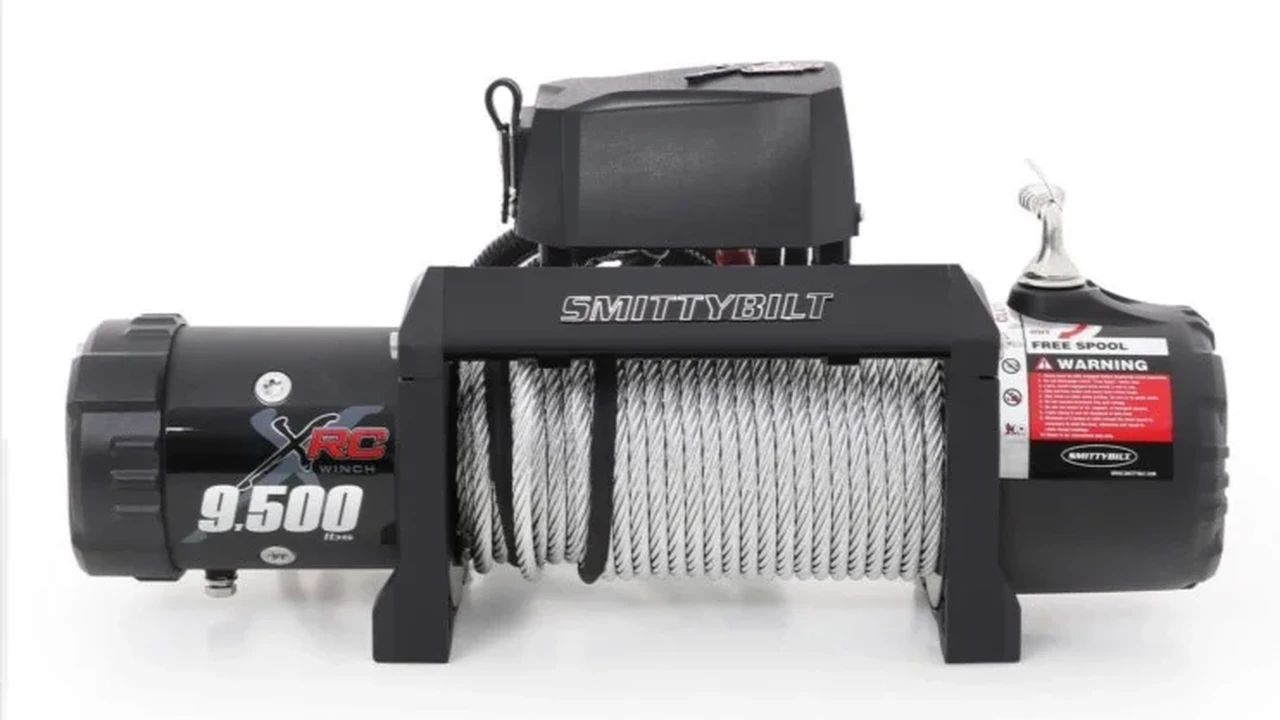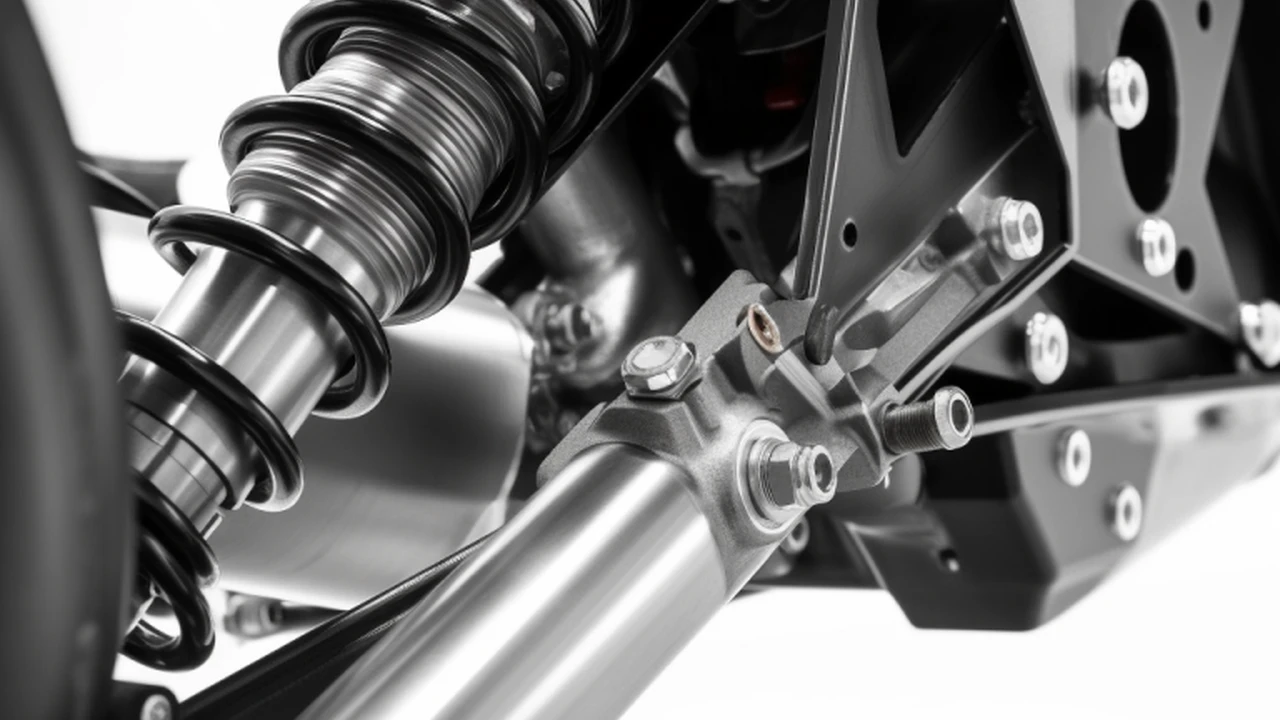Review: Warn vs. Smittybilt Winches for Off-Road Use
Warn and Smittybilt are popular brands in the off-road winch market. We compare these popular winches to help you make the right choice. Discover which brand offers the best performance and features for your vehicle. Enhance your off-road experience with our expert analysis.

So, you're in the market for a winch? Smart move! Getting stuck sucks, and a good winch can be a lifesaver (and a vehicle-saver!). Warn and Smittybilt are two of the biggest names in the winch game, but which one's right for you? Let's dive into a head-to-head comparison, breaking down the pros, cons, and everything in between. We'll even look at some specific models and their price points to help you make the best decision.
Winch Brands Overview: Warn and Smittybilt Winch History and Reputation
Before we get into the nitty-gritty, let's set the stage. Warn has been around since 1948 and is generally considered the gold standard for winches. They've built a reputation for quality, durability, and innovation. Think of them as the Cadillac of winches – you're paying for top-notch performance and reliability. Smittybilt, on the other hand, has been around since 1956, initially focusing on truck and Jeep accessories. They've become known for offering a more budget-friendly option without completely sacrificing performance. They're more like the Chevy – solid, dependable, and won't break the bank.
Winch Performance Comparison: Warn Winches vs Smittybilt Winches
Performance is king when it comes to winches. Here's how Warn and Smittybilt typically stack up:
- Pulling Power: Both brands offer a wide range of winches with varying pulling capacities (measured in pounds). You'll find models from around 8,000 lbs all the way up to 18,000 lbs or more. Generally, Warn's higher-end models tend to have slightly more consistent and powerful pulls, especially under heavy load. Smittybilt winches are usually enough for most recreational off-roaders.
- Speed: Warn winches often boast faster line speeds, meaning they can reel in your vehicle more quickly. This can be a significant advantage, especially in situations where you need to make quick progress. Smittybilt winches are a bit slower, but that's often a trade-off for the lower price.
- Durability: This is where Warn really shines. They use higher-quality materials, more robust construction, and better seals to protect against the elements. Warn winches are built to withstand years of abuse and harsh conditions. Smittybilt winches are reasonably durable, but they might not hold up as well in extremely demanding environments.
- Reliability: Warn's reputation for reliability is well-earned. Their winches are less prone to failure and generally require less maintenance. Smittybilt winches are generally reliable, but you might encounter occasional issues, especially with some of their older or lower-end models.
Winch Features and Technology: Exploring Warn and Smittybilt Innovations
Modern winches are packed with features. Let's see what Warn and Smittybilt bring to the table:
- Remote Controls: Both brands offer remote controls (wired and wireless) for operating the winch from a safe distance. Warn's remotes often have more advanced features, such as integrated displays and feedback systems.
- Motor Type: Series-wound motors are common in both brands, offering a good balance of power and speed. Warn also uses permanent magnet motors in some of their lighter-duty winches, which are more efficient but less powerful.
- Braking Systems: A reliable braking system is crucial for preventing runaway cable and ensuring safe operation. Warn's braking systems are generally considered more robust and reliable. Smittybilt winches use mechanical and automatic braking systems.
- Winch Line Material: Both brands offer winches with steel cable and synthetic rope options. Synthetic rope is lighter, stronger (pound for pound), and safer (it doesn't store as much energy if it breaks), but it's also more expensive.
Specific Winch Models: Warn and Smittybilt Top Picks and Specs
Let's get into some specific models to give you a better idea of what's available:
Warn Winch Models
- Warn VR EVO 10-S: This is a popular choice for Jeeps and smaller trucks. It offers 10,000 lbs of pulling capacity, a fast line speed, and a durable construction. It typically retails for around $700-$900.
- Warn Zeon 10-S: A step up from the VR EVO, the Zeon boasts a more refined design, even better durability, and advanced features like a remote with a digital display. Expect to pay around $1200-$1500.
- Warn M8274-50: A legendary winch known for its incredibly fast line speed and robust construction. It's a favorite among serious off-roaders and professionals. This classic will set you back around $1800-$2200.
Smittybilt Winch Models
- Smittybilt XRC 9.5 Gen3: A popular and affordable option for Jeeps and trucks. It offers 9,500 lbs of pulling capacity and decent performance. You can usually find it for around $350-$500.
- Smittybilt X2O Comp Series: A step up from the XRC, the X2O offers a waterproof design, a more powerful motor, and a synthetic rope option. Expect to pay around $500-$700.
- Smittybilt Winch Gen2 XRC 12: Offering 12,000 lbs of pulling capacity, the Gen2 XRC 12 is a great option for larger vehicles or those who need extra pulling power. It's usually priced around $450-$650.
Winch Price and Value: Analyzing Cost vs Benefits of Warn and Smittybilt
Price is a major factor for most buyers. Smittybilt winches are generally significantly cheaper than Warn winches. However, you're often getting what you pay for. Warn winches offer better durability, reliability, and performance. The key is to consider your needs and budget. If you're a casual off-roader who only needs a winch for occasional use, a Smittybilt winch might be a good option. If you're a serious off-roader who relies on their winch frequently and in demanding conditions, a Warn winch is a worthwhile investment.
Winch Installation and Maintenance: Tips for Warn and Smittybilt Winches
Proper installation and maintenance are essential for ensuring the longevity and performance of your winch, regardless of the brand.
Installation Tips
- Use the Right Mounting Plate: Make sure you have a winch mounting plate that's specifically designed for your vehicle and winch model.
- Follow the Instructions Carefully: Read the manufacturer's instructions thoroughly before starting the installation process.
- Use Proper Wiring: Use heavy-gauge wiring to ensure adequate power delivery to the winch motor.
- Torque Bolts Correctly: Use a torque wrench to tighten all bolts to the specified torque values.
Maintenance Tips
- Inspect the Winch Line Regularly: Check the winch line (steel cable or synthetic rope) for any signs of damage, such as fraying, kinks, or cuts. Replace the line if necessary.
- Lubricate Moving Parts: Lubricate the winch's moving parts (e.g., gears, drum) with a high-quality grease.
- Keep the Winch Clean: Clean the winch regularly to remove dirt, mud, and debris.
- Re-spool the Winch Line Properly: Make sure the winch line is spooled evenly on the drum.
- Test the Winch Regularly: Test the winch periodically to ensure it's working properly.
Real-World Winch Scenarios: When Warn or Smittybilt Shines
Let's consider some real-world scenarios to illustrate when each brand might be a better fit:
- Scenario 1: Weekend Warrior: You enjoy occasional off-roading trips on moderate trails. A Smittybilt XRC 9.5 Gen3 would likely be sufficient for your needs.
- Scenario 2: Serious Rock Crawler: You tackle challenging rock crawling trails and need a winch that can handle heavy loads and frequent use. A Warn Zeon 10-S would be a better choice.
- Scenario 3: Overlanding Expedition: You're embarking on a long overlanding trip and need a reliable winch that can withstand harsh conditions. A Warn VR EVO 10-S or a Smittybilt X2O Comp Series would be suitable options, depending on your budget.
- Scenario 4: Budget-Conscious Off-Roader: You're on a tight budget but still want a winch for basic recovery situations. A Smittybilt XRC 9.5 Gen3 is a solid choice.
Winch Buyer's Guide: Key Factors to Consider Before You Buy
Before you pull the trigger on a winch, consider these key factors:
- Pulling Capacity: Choose a winch with a pulling capacity that's at least 1.5 times the weight of your vehicle.
- Winch Line Material: Decide whether you prefer steel cable or synthetic rope.
- Motor Type: Consider the motor type (series-wound or permanent magnet) and its power output.
- Remote Control: Choose a remote control that's easy to use and has the features you need.
- Durability: Look for a winch with a durable construction and good seals to protect against the elements.
- Budget: Set a budget and stick to it.
:max_bytes(150000):strip_icc()/277019-baked-pork-chops-with-cream-of-mushroom-soup-DDMFS-beauty-4x3-BG-7505-5762b731cf30447d9cbbbbbf387beafa.jpg)





